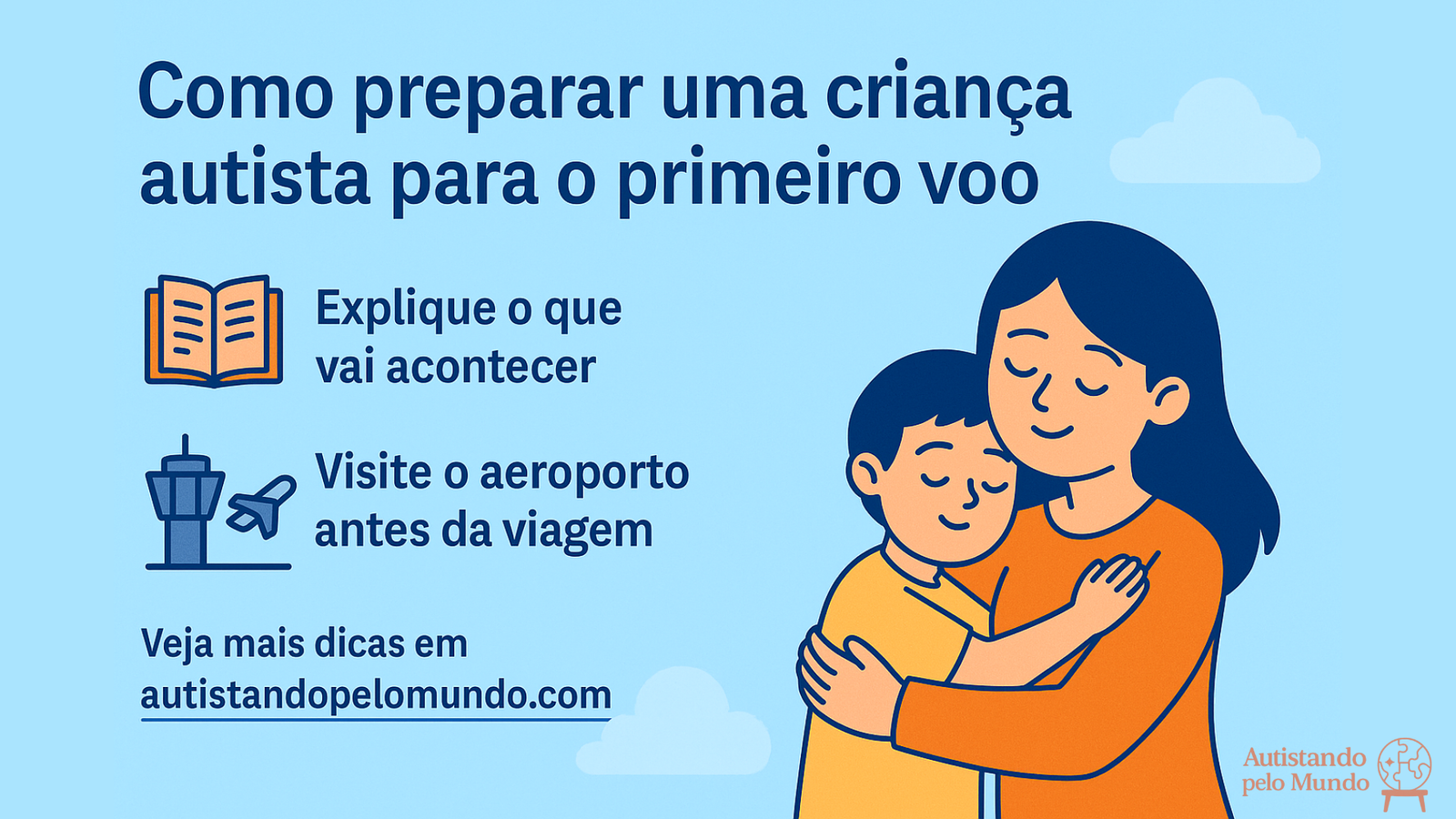✈️ How to prepare an autistic child for their first flight
Flying can be a magical experience, but it can also be challenging—especially for a child with autism. 👶🧩 Routine changes, loud noises, crowds, and sensory stimuli can cause stress or meltdowns. Therefore, planning is essential to ensure a smooth and comfortable trip for the whole family. 💙
🧠 1. Explain what the trip will be like in advance
Autistic children feel safer with predictability. Before the trip, talk about what the flight will be like, the airport, the sounds, the waiting time, and what will happen during the trip. Use visual aids such as videos, drawings, social stories, or even boarding simulation games. This helps create familiarity with the experience. 🗣️📸
🛫 2. Visit the airport beforehand, if possible
If available, take your child to explore the airport before your flight. Some terminals offer accessibility programs and guided tours. This can help reduce anxiety and prevent meltdowns on the day of travel. If this isn't feasible, show pictures, videos, or simulate the journey at home. 🏢📹
🎒 3. Put together a sensory and comfort kit
Pack a backpack with calming items: noise-canceling headphones 🎧, a blanket or pillow 🧸, favorite toys, a tablet with familiar videos 📱, safe snacks 🍪, and sensory objects (like balls, slime, or familiar scents). These resources make a difference in environments full of stimuli.
📢 4. Notify the airline in advance
Contact the airline to inform them that you're traveling with an autistic child. Many offer priority boarding, quieter seats, and trained staff to provide support. This can help avoid stressful situations in the queue or during boarding. 🛫📞
🪪 5. Use hidden accessibility identification
Bracelets, badges, or stickers indicating that a child has autism can help in times of crisis or unusual behavior. Airport and airline staff recognize these signs and offer personalized assistance. This strengthens the support network throughout the journey. 🤝
❤️ 6. Respect the child's limits
Watch for signs of fatigue, stress, or sensory overload. Allow breaks, offer support, and adapt plans if necessary. The most important thing is that the child feels safe and respected. Every small achievement is a big step. 💪👣
🛬 7. Have a post-flight plan
After landing, the environment will still be new and may generate more anxiety. Maintain a relaxed routine during the first few days of your trip and bring familiar objects to your accommodation. Familiarity helps your child adapt more calmly. 🏨🌟
🌍 8. Inclusive tourism starts with information
When airports, airlines, and tourist destinations focus on accessibility, travel becomes more humane and safe. Planning and empathy are key to enabling more families to have incredible experiences. The first flight can indeed be a happy memory—with support, love, and inclusion. 🤗💼
💡 Extra tip for tourism professionals
If you work in the tourism industry, consider seeking training in serving people with invisible disabilities, such as autism. Information is the foundation for more accessible tourism for everyone. 🧠🌐
📚 Want more tips on inclusive and accessible tourism? Browse our website and discover practical content, real-life experiences, and tools that can transform your travel experience!

📣 Share your inclusion experience!
Have you had a positive accessibility experience at a park, hotel, restaurant, or other location? Your story could help other families plan more inclusive trips.
Send your report and it may appear here on the website, in our section Reviews or General Tips!

Don't miss any tips!
Sign up and receive our inclusive tourism experiences directly to your email.
Want to make tourism more inclusive?
We are open to partnerships with accessible spaces, inclusive inns and projects that value diversity.
Get in touch and let's talk!
